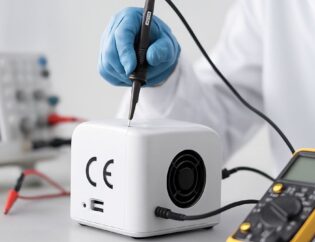
The Role of the CE Mark in the Inspection Process: How Is Product Compliance Proven?
The CE mark signifies that a product offered for sale in the European Union market complies with essential health, safety, and environmental requirements. However, this mark is not just a symbol—it is the result of a comprehensive inspection process that certifies the product meets quality, safety, and performance standards.
Key Steps in the CE Mark Inspection Process
- Declaration of Conformity
One of the most important components of the CE mark is the Declaration of Conformity prepared by the manufacturer. This declaration officially states that the product complies with the relevant EU directives and standards. It must be made available upon request by the competent authorities. - Preparation of the Technical File
One of the most critical steps in CE mark inspection is the complete preparation of the technical file. This file contains all documentation related to the product, from design to test reports.
Main contents of the technical file include:
- Product description and technical drawings
- Risk analysis and assessment report
- Test results and certificates
- User manuals and labeling information
- Testing and Inspection Processes
The CE mark can only be validated with documents proving that the product has successfully passed the tests prescribed in the relevant standards. These tests may cover functional, mechanical, electrical, or chemical safety aspects of the product. - Surveillance and Market Monitoring
The process does not end after the product is placed on the market. Authorities continue to monitor whether products on the market bear the CE mark and whether the technical documentation is valid. Products found to be non-compliant may be recalled, banned from sale, or subjected to penalties.
Common Issues Encountered During Inspection
- Incomplete or incorrect technical documentation
- Invalid or non-compliant test reports
- Incorrect or missing labeling
- Documentation prepared based on outdated legislation
Solution:
For a successful inspection during the CE certification process, it is crucial to ensure that the product is designed in accordance with the correct standards from the beginning. All documentation must be kept up to date, and tests must be conducted in accredited laboratories.
Conclusion
The CE mark is not just a label—it is proof that all necessary conformity assessment steps have been successfully completed for a product to be accepted in the European Union market. The Declaration of Conformity, technical documentation, test reports, and market surveillance are essential elements of the inspection process.
A properly executed inspection process ensures that products not only meet legal requirements but also prove their safety and quality—giving them a competitive edge in the market.









